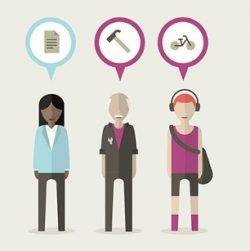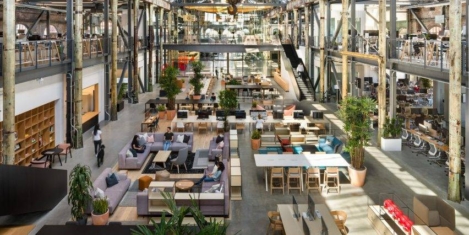December 18, 2018
Government’s new workplace reforms: the world responds
 The UK government has introduced what it claims to be the most significant package of workplace reforms for 20 years in response to last year’s Taylor Report on working practices. The Good Work Plan has introduced a range of measures which the Government claims will improve the rights of agency and part time workers and discourage employers from indulging in unwelcome practices. The reforms are intended to stop businesses opting out of equal pay arrangements for agency employees and improve the conditions for gig economy workers generally, for example by giving workers details of their rights from the first day in a job, such as eligibility for sick leave, pay levels, maternity and paternity leave.
The UK government has introduced what it claims to be the most significant package of workplace reforms for 20 years in response to last year’s Taylor Report on working practices. The Good Work Plan has introduced a range of measures which the Government claims will improve the rights of agency and part time workers and discourage employers from indulging in unwelcome practices. The reforms are intended to stop businesses opting out of equal pay arrangements for agency employees and improve the conditions for gig economy workers generally, for example by giving workers details of their rights from the first day in a job, such as eligibility for sick leave, pay levels, maternity and paternity leave.

























 The vast majority (97 percent) of office workers in UK feel frustrated by their workplace environments, with many feeling the need to escape office life as a result. A new report from Staples has discovered that one-in-five (22 percent) end up browsing LinkedIn job ads for something better when they’re frustrated. As a result, job-hopping is prolific, with workers now predicted to have 11.7 jobs between the ages of 18 and 48. The expectation that the grass must be greener elsewhere is leaving most thinking about switching jobs. However, when they do end up jumping ship, many just experience a short-term fix. According to the study, a third (37 percent) get frustrated in their new office before the end of their first six months. The majority of office workers say they seek fulfilment (89 percent) at work, and for most (77 percent), the quality of their office workspace is a contributing factor in how fulfilled they feel.
The vast majority (97 percent) of office workers in UK feel frustrated by their workplace environments, with many feeling the need to escape office life as a result. A new report from Staples has discovered that one-in-five (22 percent) end up browsing LinkedIn job ads for something better when they’re frustrated. As a result, job-hopping is prolific, with workers now predicted to have 11.7 jobs between the ages of 18 and 48. The expectation that the grass must be greener elsewhere is leaving most thinking about switching jobs. However, when they do end up jumping ship, many just experience a short-term fix. According to the study, a third (37 percent) get frustrated in their new office before the end of their first six months. The majority of office workers say they seek fulfilment (89 percent) at work, and for most (77 percent), the quality of their office workspace is a contributing factor in how fulfilled they feel.








January 3, 2019
Anti-team legislation can make us slaves to individual rights
by Helen Jamieson • Comment, Flexible working, Workplace
Society is becoming more selfish. At least that’s what the most commonly held view on the issue suggests, and it’s only set to get worse. Whether or not you believe the headlines, my 20 plus years’ experience as an HR consultant has led me to believe the hype. Increasingly many (I stress, not all) employees no longer see themselves as part of a team, but are increasingly ‘lone wolves’ single mindedly pursuing their needs and wants above those of the team. Each decision they make is with ‘I’ first and foremost, with ‘we’ maybe just a passing thought. It could be argued this was inevitable. How do you create a culture of team engagement, and group morale when for decades UK workplace legislation has focused almost exclusively on Individual Rights, rather than the ‘rights’ of the group? I’d argue it is simply not possible to develop successful teams where each individual has numerous legal rights but no corresponding responsibilities. My wish for 2019 would be for the government to set out a ‘responsibility’ alongside every ‘right’ it confers.
(more…)